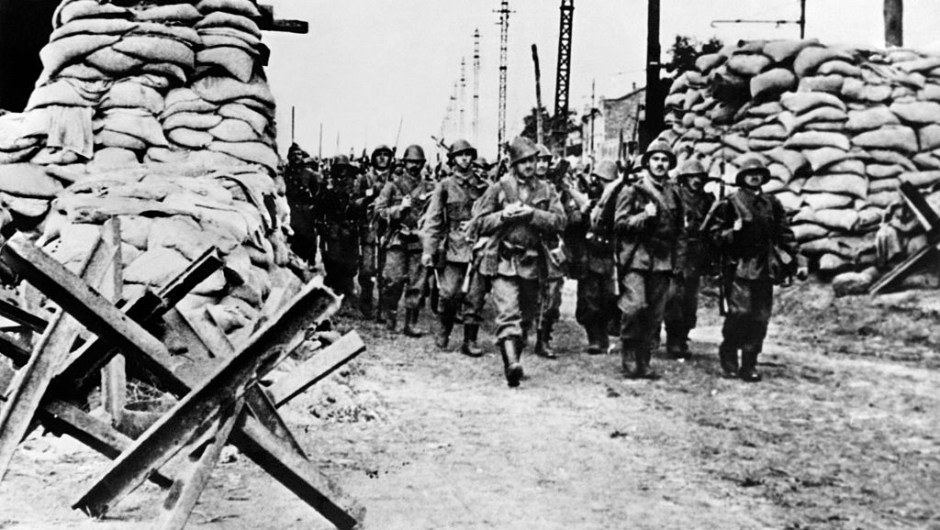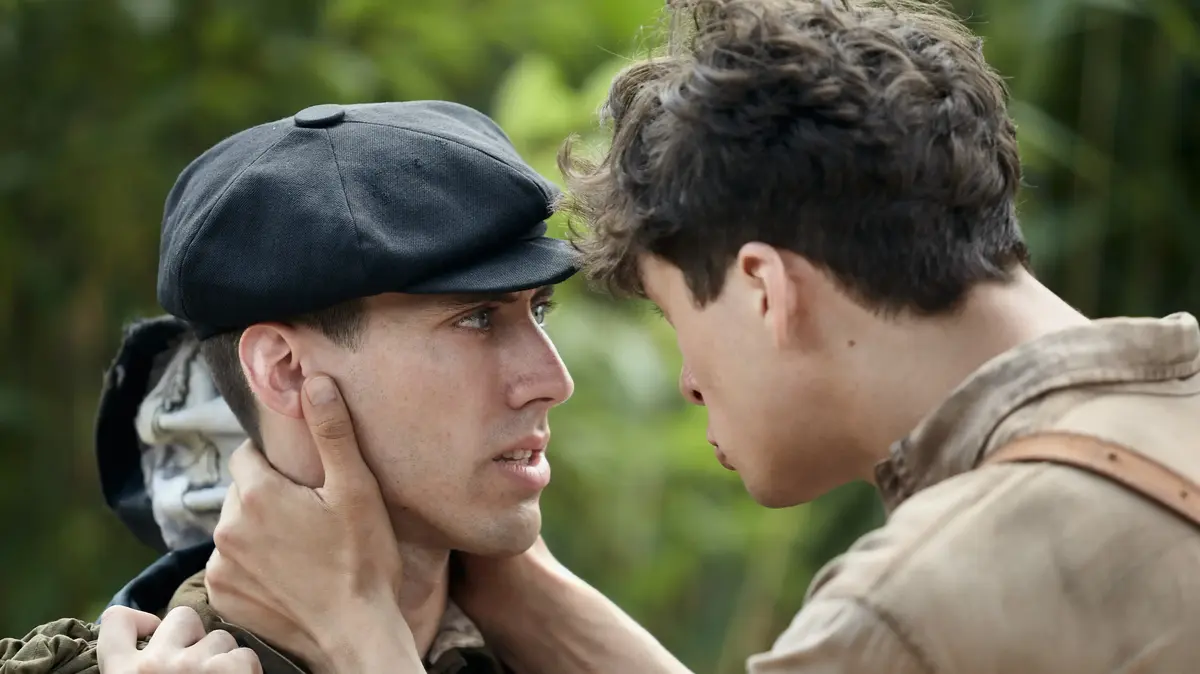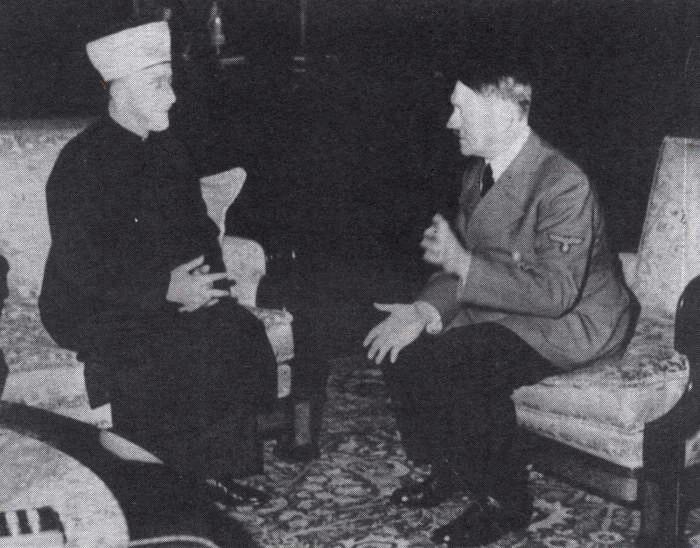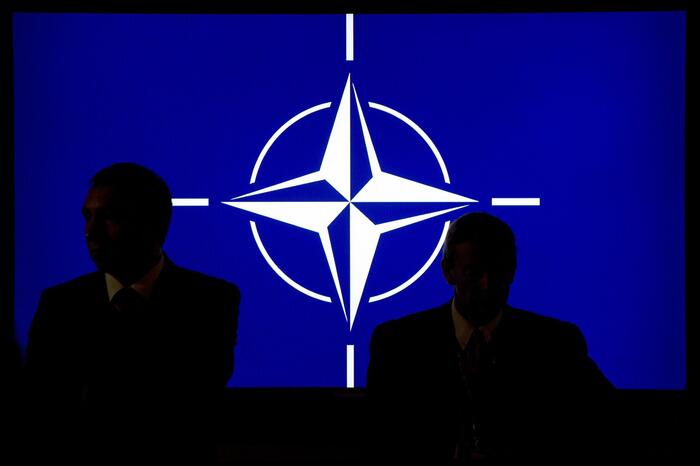1 of 11
|
German tanks advance on a Soviet village on October 29, 1941. See in this gallery some important moments of "Operation Barbarossa", whose beginning marks 80 years.
(Credit: Fotosearch / Getty Images)
2 of 11
|
Romanian infantry entering the Ukrainian city of Odessa in October 1941 (Credit: - / FRANCE PRESSE VOIR / AFP via Getty Images)
3 of 11
|
German tanks and soldiers attacking Soviet positions in 1941. (Credit: FPG / Hulton Archive / Getty Images)
4 of 11
|
Romanian cavalry crosses the Pruth River in September 1941, (Credit: - / AFP via Getty Images)
5 of 11
|
Exhausted German soldiers rest by the roadside in 1941. (Credit: Keystone / Getty Images)
6 of 11
|
The Soviet ambassador to the United Kingdom, Ivan Maisky, appreciates the manufacture of a tank dubbed "Stalin" and which was sent to Russia to assist in the defense in 1941. (Credit: Hulton Archive / Getty Images)
7 of 11
|
Soviet troops captured by the Germans in 1941. (Credit: Keystone / Getty Images)
8 of 11
|
Finnish troops in a position 80 kilometers from Leningrad.
(Credit: T. Nousiainen / Hulton Archive / Getty Images)
9 of 11
|
A column of German soldiers march into Russia.
(Credit: Keystone / Getty Images)
10 of 11
|
German troops forcing Soviet civilians to leave their homes.
(Credit: Keystone / Getty Images)
11 of 11
|
German troops remove an obstacle on the border between Poland and the Soviet Union (Credit: Keystone / Getty Images)
(CNN Spanish) -
In the early morning of June 22, 1941, about 3.05 million Germans and their allies crossed the border to invade the Soviet Union without a declaration of war.
The beginning of "Operation Barbarossa", 80 years ago, triggered a massacre of people on a scale rarely seen.
From that June 22, Eastern Europe would be the scene of the fiercest fighting during the Second World War.
When German troops finally surrendered in Berlin on May 9, 1945, the conflict had cost the lives of 25 million Soviets, and 3.5 million between the Germans and their allies on this front alone.
99-year-old Brazilian war veteran who fought in WWII defeats coronavirus
While about 2.5 million Jews (out of a total of six million in the entire war) were killed in their villages and cities by special German troops - the Einsatzgruppen - accompanying the invading forces.
Furthermore, the German special troops - the Einsatzgruppen - accompanying the invading forces murdered about 2.5 million Jews (out of a total of six million in the entire war) living in territories owned or controlled by the USSR, from according to estimates from the World Shoah Yad Vashem Commemoration Center.
"'Operation Barbarossa' was a turning point in the fate of the Jews," notes Yad Vashem.
"The ideological campaign and the identification of communism with Jews and Judaism created a link between the war and anti-Jewish politics" of Nazism, he adds.
advertising
A multinational force
World War II had started on September 1, 1939 with the German invasion of Poland.
Then the fighting moved west: Norway, the Netherlands, Belgium and France would later fall under German occupation.
Only the UK was left standing.
In 1941 the Adolf Hitler regime turned its attention to the east again.
Although a non-aggression pact signed in 1939 between the foreign ministers of Nazi Germany and the Soviet Union governed, German troops and their Romanian, Hungarian, Italian, Slovak and Finnish allies attacked on June 22.
Even a group of volunteers from Spain, which had remained neutral, also joined the assault.
The invading troops attacked with three Army Groups and the objective of capturing Leningrad, Kiev and Moscow.
Nazi dictator Adolf Hitler greets a soldier wounded during "Operation Barbarossa" (Credit: by Keystone / Hulton Archive / Getty Images)
Emboldened by their rapid successes in Poland and France, the German forces tried to replicate their tactical novelties with the combined use of tanks, motorized infantry and aircraft in large maneuvers - already known by the name of Blitzkrieg at that time.
The objective was to deliver a decisive blow to the Red Army.
Although they had initial successes, the tenacity of the Soviet defenders, the unavoidable scale of distances and fighting, and the pressures on logistical lines made progress difficult.
The end of "Operation Barbarossa", but not of the war
Delayed in their objectives and with the harsh Russian winter settling in, German troops and their allies took Kiev and besieged Leningrad, but a Soviet counteroffensive stopped them 80 kilometers from Moscow and nearly collapsed the invading armies.
Docuserie explores secrets about Latin America in World War II
The operation, named in honor of Frederick I "Barbarossa" -a medieval Germanic king-, had failed.
But the conflict on the Eastern Front, which the Soviets dubbed the "Great Patriotic War," was just beginning.
"Full of sadness and shame we bow in reverence before the more than 30 million people who gave their lives in Central and Eastern Europe between 1939 and 1945 during the war, which was planned and started to its end by Germany," said the German Foreign Minister Heiko Maas on June 9.
Germany World War IIURSS









